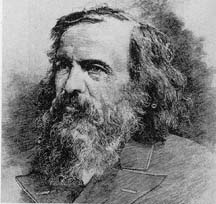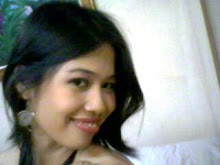
Democritus (460-370B.C.)
-Greek philosopher, Developed atomic theory, -Elaborated idea that matter consisted of atoms having physical size and shape which constantly moved in a void and interacted in different ways
Daniel Rutherford (1749-1819)
-Discovered Nitrogen through experimentation with a mouse, a candle, and burning phosphorus
Robert Boyle (1627-1691)
-English physicist and chemist, Experimented in pneumatics (the study of mechanical properties of air and other gases), Through research he rejected the accepted definition of matter, -Proposed Boyle’s Law (1662)
Henry Canvendish (1731-1810)
-English physicist and chemist, Discovered hydrogen (1766), Discovered nitric acid
John Dalton (1766-1844)
-English chemist and physicist, Professor of mathematics and natural philosophy (1793), Developed atomic theory, His theory (1805) accounts for the law of conservation of mass, law of definite proportions, and law of multiple proportions, Produced the first table of atomic weights
Amedeo Avogadro (1776-1856)
-His hypothesis stated that equal volumes of gases, at the same temperature and pressure, had the same amount of molecules, Avogadros number is 6.022e23, meaning that exactly 12 grams of carbon 12 has exactly 6.022e23 carbon atoms
Joseph Louis Gay-Lussac (1778-1850)
-French chemist and physicist, Developed the law of volumes concerning the combination of gases, Discovered Boron
Robert Wilhelm Bunsen (1811-1899)
-German chemist, Helped develop the spectroscope, Introduced the Bunsen burner that was actually developed by his laboratory assistant, Peter Desaga, Discovered elements Cesium and Rubidium
Dmitri Ivanovich Mendeleev (1834-1907)
-Russian chemist, Developed the periodic table by placing the elements in order of increasing atomic weight (1869), Predicted the existence and properties of elements that would fill the gaps left in his chart (1871), These elements were discovered between 1875 and 1885
Joseph John Thomson (1856-1940)
-English physicist, Researched atomic structure, Discovered that atoms contained particles which he called "electrons" by testing the ratio of cathode ray particles to their mass and found out that they were always the same. The tube was full of negatively charged particles eventually from his name called electrons., Developed the "plum pudding" or "raisin muffin," model of the atom which consisted of electrons embedded in a positive sphere of matter (1904), Received Nobel Prize for physics (1907), Developed the mass spectrograph with Francis William Ason (1919)
Robert Andrews Milikan (1868-1953)
-American physicist, Succeeded in measuring, quite accurately, the minimum electric charge that could be carried by a particle (1911), Found charge of an electron through oil-drop experiment, Made an apparatus that allowed drops of oil to fall between two electrically charged plates, He monitored the drops and measured how the voltage affected their rate of fall, From this, he calculated the charges on the drops, which were always multiples of 1.60E-19C, This number, he found, is the charge of one electron
Ernest Rutherford (1871-1937)
-British physicist from New Zealand, Discovered several radioactive isotopes with colleagues (1899-1905), Classified forms of radiation as alpha, beta, and gamma; received Nobel Prize for chemistry (1908), Worked on submarine detection during WWII, Developed atomic theory (1911), Researched Transmutational effects of alpha particles on gases (1919) and other elements, Performed the "gold-foil" experiment which he used piece of gold foil and shot positively charged particles at it to find other parts of the atom, Almost all of the particles shot through the foil but some "larger particles" shot back, He called the central part of the atom the nucleus
Gilbert Newton Lewis (1875-1946)
-American physical chemist, Developed atomic theory, Proposed the octet rule and the electron dot method of showing valence electrons, Important contributor to acid-base theory and thermodynamics,
Niels Henrik Bohr (1885-1962)
-Danish physicist, His model of atomic structure (Bohr Model) proposed that electrons orbit the nucleus in fixed orbits that are discrete energy states, Received the Nobel Prize for physics for his work in atomic structure and radiation (1922),
Henry Moseley (1887-1915)
-English physicist, Discovered Moseley's law of characteristic X-ray spectra of elements (1913), Demonstrated that the number of electrons in an element is the same as the atomic number, establishing the significance of the atomic number
Erwin Schroedinger (1887-1961)
-Austrian physicist, Developed atomic theory of wave mechanics (1926)
-Shared Nobel Prize for physics with P.A.M.Dirac (1933)
James Chadwich (1891-1974)
-English physicist, Discovered the neutron, Received the Nobel Prize for physics for this discovery (1935),
Louis-Victor de Broglie (1892-1958)
-French physicist, Demonstrated mathematically that electrons and other subatomic particles exhibit wavelike properties, Received Nobel Prize for physics (1929)
Linus C. Pauling (1901-1994)
-American biochemist, Applied X-ray diffraction, electron diffraction and quantum mechanics to chemistry, Developed theories of rare gas compounds; developed mechanistic theory of enzymes (1946), Determined the physical structure of proteins as helical (1951), Developed and applied some of the laws of structural chemistry in work with proteins, Researched the structure of DNA, Received Nobel Prize for chemistry (1954) for research of the nature of chemical bonds, Received Nobel Prize for peace (1962) for work in banning nuclear weapons testing, Received National Medal of Honor (1975), Shared in the quantum mechanical development of valence and resonance theory, Introduced concept of electronegativity, Founded the Linus Pauling Institute of Science and Medicine (1973), Researched Vitamin C and nutrition








